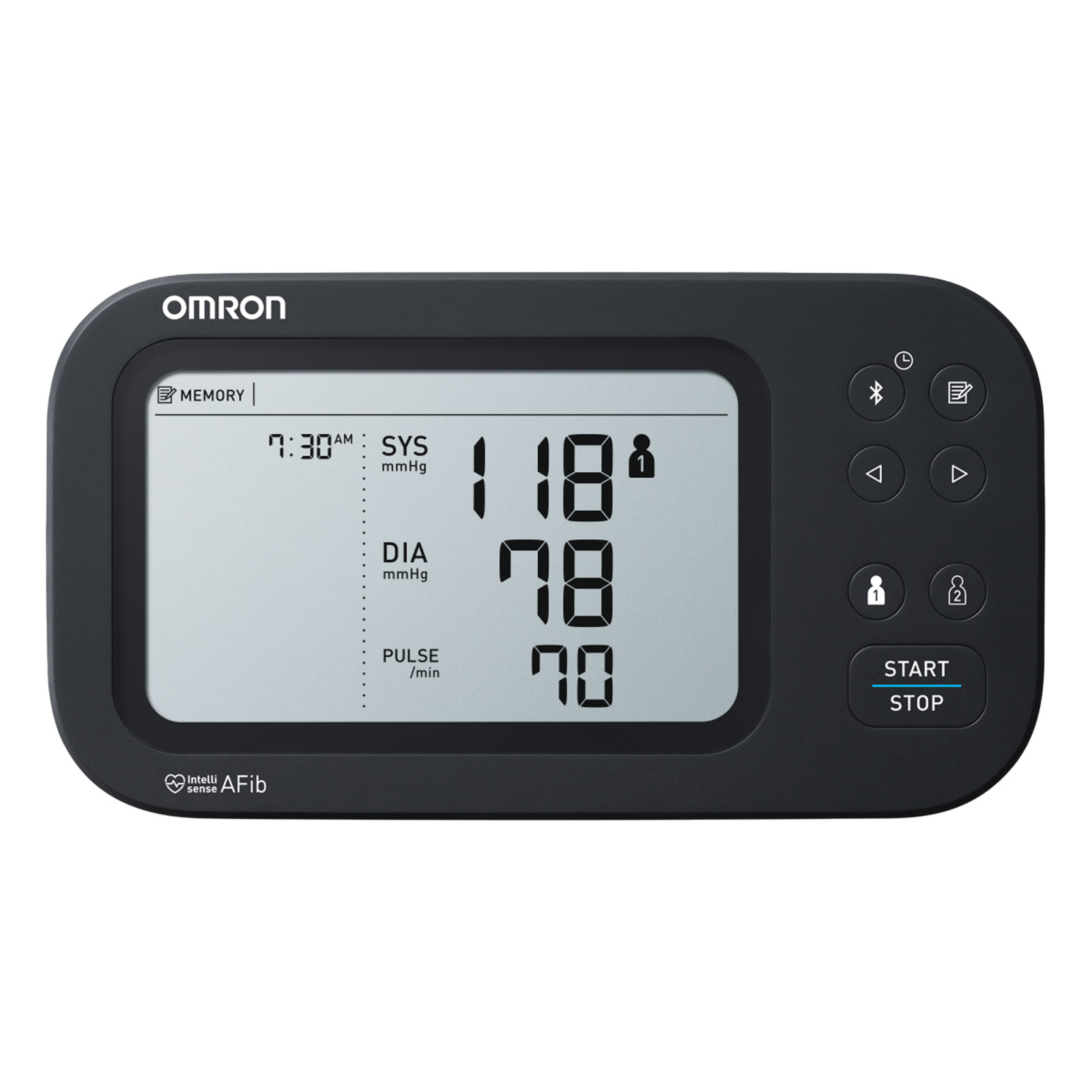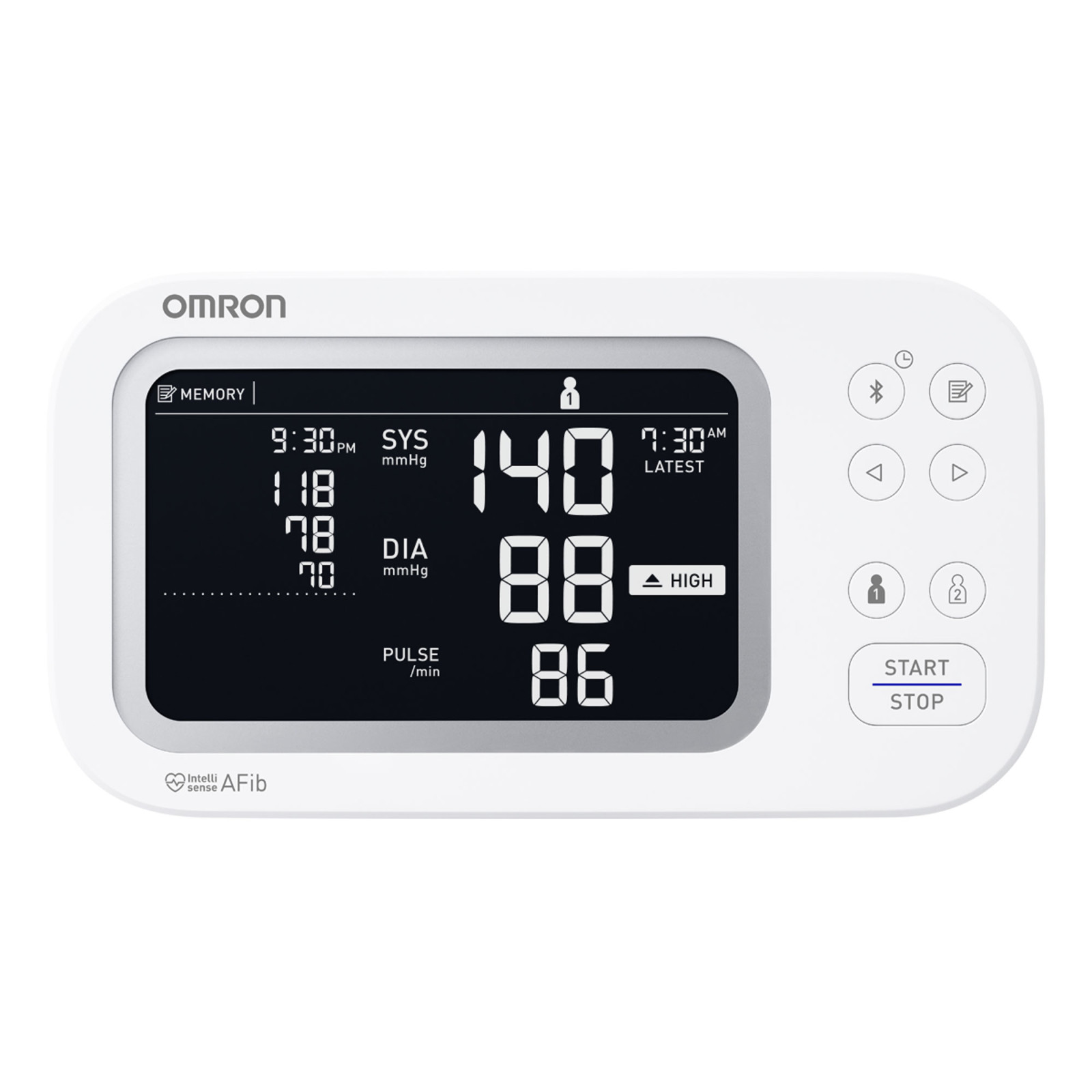
Reduce stroke risk by 66% with early detection of AFib1
Every BP check now screens for AFib
Hypertension is a leading cause of AFib, a serious heart rhythm disorder that often goes unnoticed but increases the risk of stroke2. OMRON blood pressure monitors with AFib Screening Technology are clinically validated to detect the possibility of AFib while taking your routine blood pressure measurement.
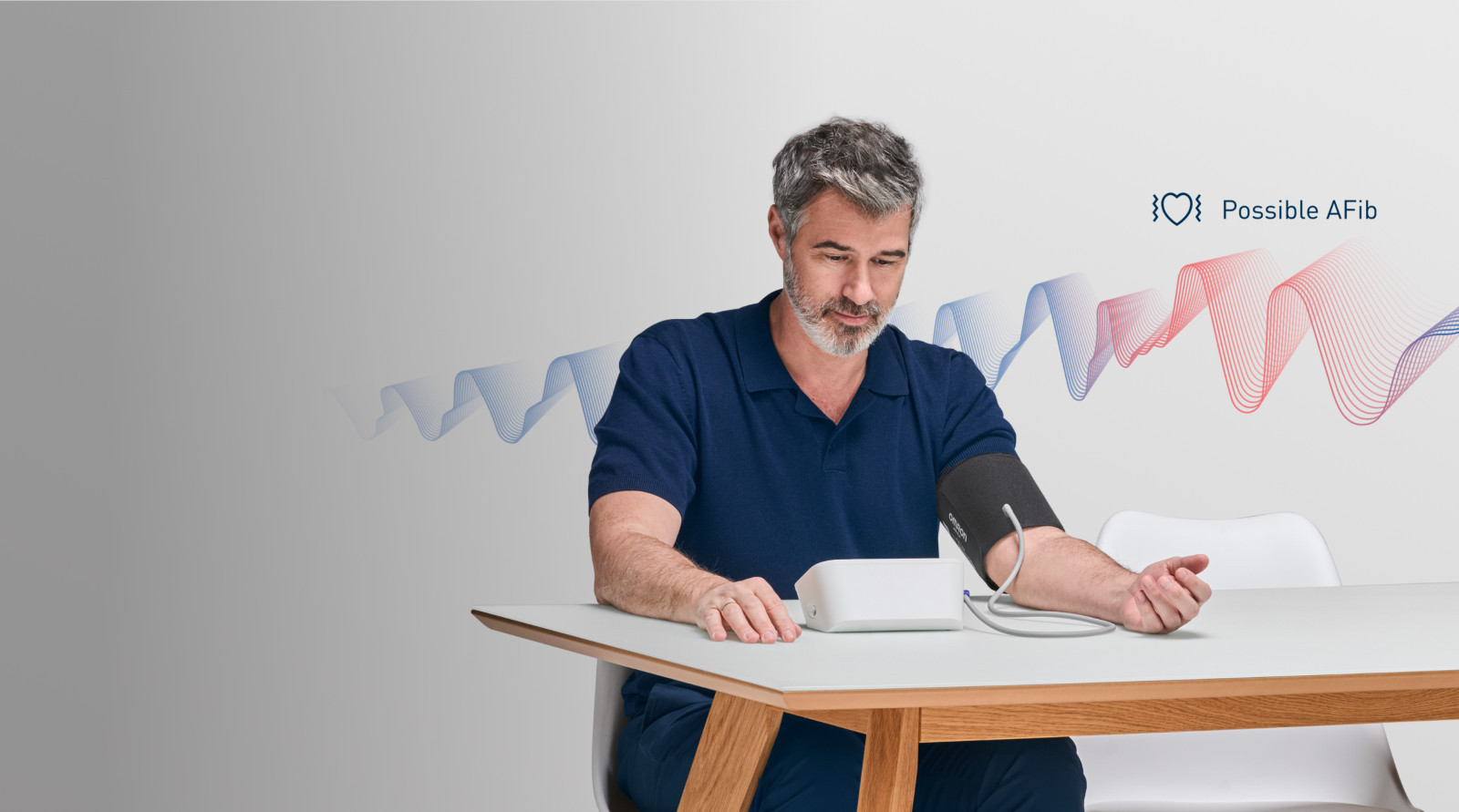

-
Dual function
With a touch of a button, automatically screen for AFib every time you measure your blood pressure.
-
No extra step needed
Eliminate the need for multiple health gadgets, enabling a one-step, at-home screening that goes beyond doctor visits.
-
High sensitivity and specificity
The OMRON BPMs with IntelliSense AFib technology had the sensitivity of 95%, specifity of 98% and accuracy of 97%.12
-
No prescription required
AFib is a heart rhythm disorder characterized by rapid and irregular heartbeats3
A normal resting heart rate is 60-100 beats per minute.4 In contrast, those with AFib experience irregular and rapid heartbeats of more than 400 times per minute.5 This elevates stroke risk by five times, accounting for 20%-30% of all strokes.6


Risk factors and comorbidities associated with AFib3
Inflammatory diseases
Valve disease
Chronic obstructive pulmonary disease
Obstructive sleep apnea
Chronic kidney disease
Physical inactivity
Obesity
Smoking
Alcohol consumption
(Borderline) hypertension
Lipid profile
(Pre-) diabetes
Vascular disease
Coronary artery disease
Heart failure
1 in 4 adults over 40 will develop AFib in their lifetime7
While regular health screenings are crucial, they can occasionally miss AFib due to its elusive nature. As the risk of AFib grows with age, its often subtle or mistaken signs leave numerous individuals undiagnosed.
Symptoms to watch for include:
-
Palpitations
-
Shortness of breath
-
General weakness
-
Chest pain
-
Dizziness
But AFib can also strike without symptoms and slip under the radar during routine check ups. That's why regular home screening is vital.

High blood pressure, or hypertension, is a leading cause of AFib in adults
It's not uncommon for both high blood pressure and AFib to be present in the same person. In fact, one medical study found the following:
High blood pressure was found to increase the risk of AFib by 50% in men and 40% in women8
High blood pressure was the 4th risk factor after heart failure, aging, and heart valve disease9
Moreover, having both AFib and high blood pressure increase the risk of stroke further.


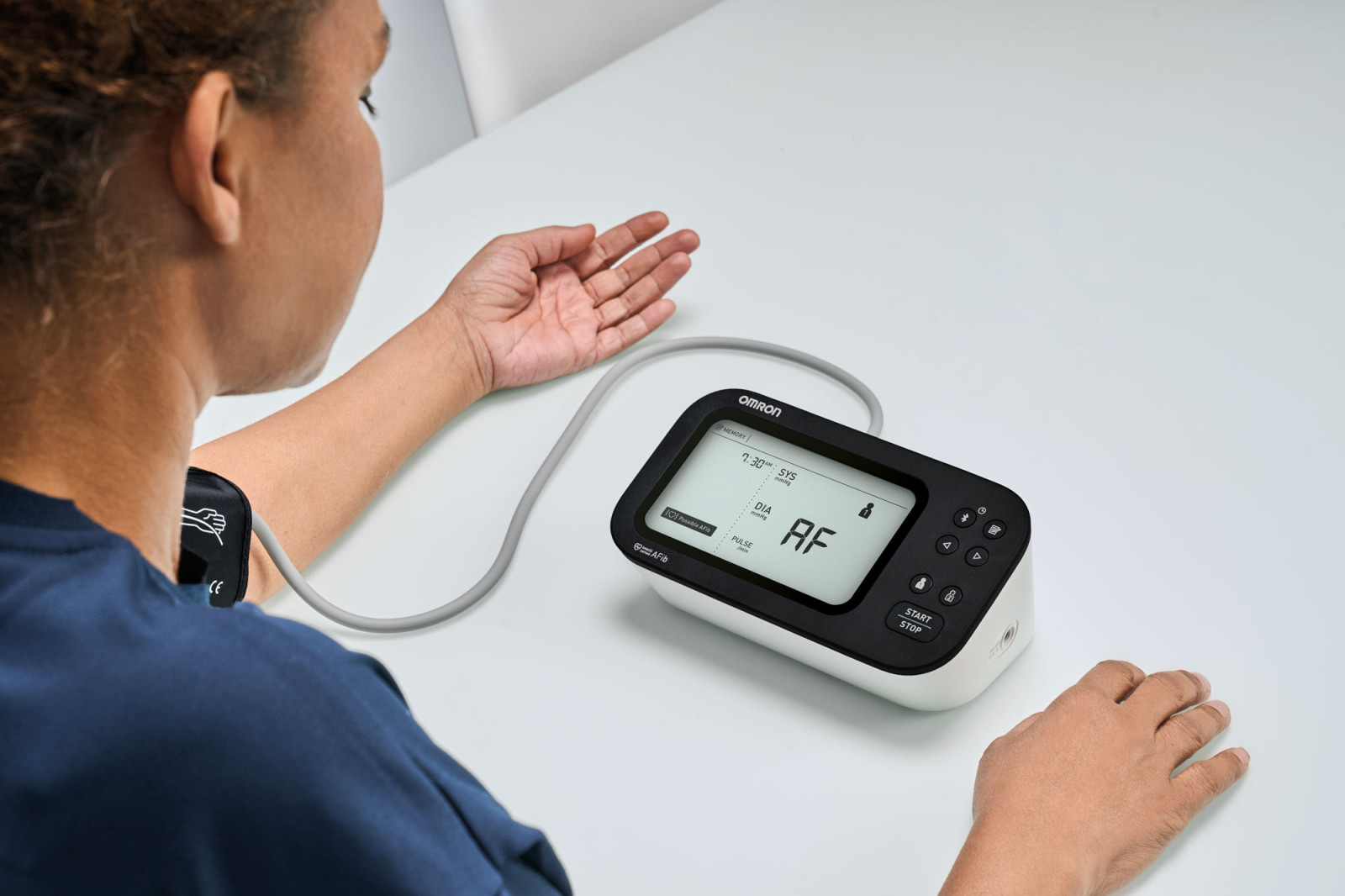

Stroke prevention
Heart disease is the leading cause of death worldwide10
Early detection of potential heart conditions and elevated blood pressure, which are major risk factors for stroke, can allow for prompt intervention and potentially prevent strokes.
Introducing clinically validated blood pressure monitors with OMRON Intellisense AFib Screening Technology. Capture blood pressure readings and screen for AFib in just one measurement.
Product comparison
OMRON blood pressure monitors with AFib Screening Technology can help maximize the benefits of regular monitoring
-
AFib detection can be a life-saver especially for hypertensive individuals and those with elevated risk factors.
Early detection for better outcomes
-
The cutting-edge Intellisense AFib technology ensures easy one-step home blood pressure monitoring with AFib screening included automatically.
No extra step
-
Measuring blood pressure and screening for AFib with a single device maximizes the benefits of regular monitoring.
Dual function
-
This device eliminates the need for multiple health gadgets or frequent medical visits for routine checks.
Cost-effective
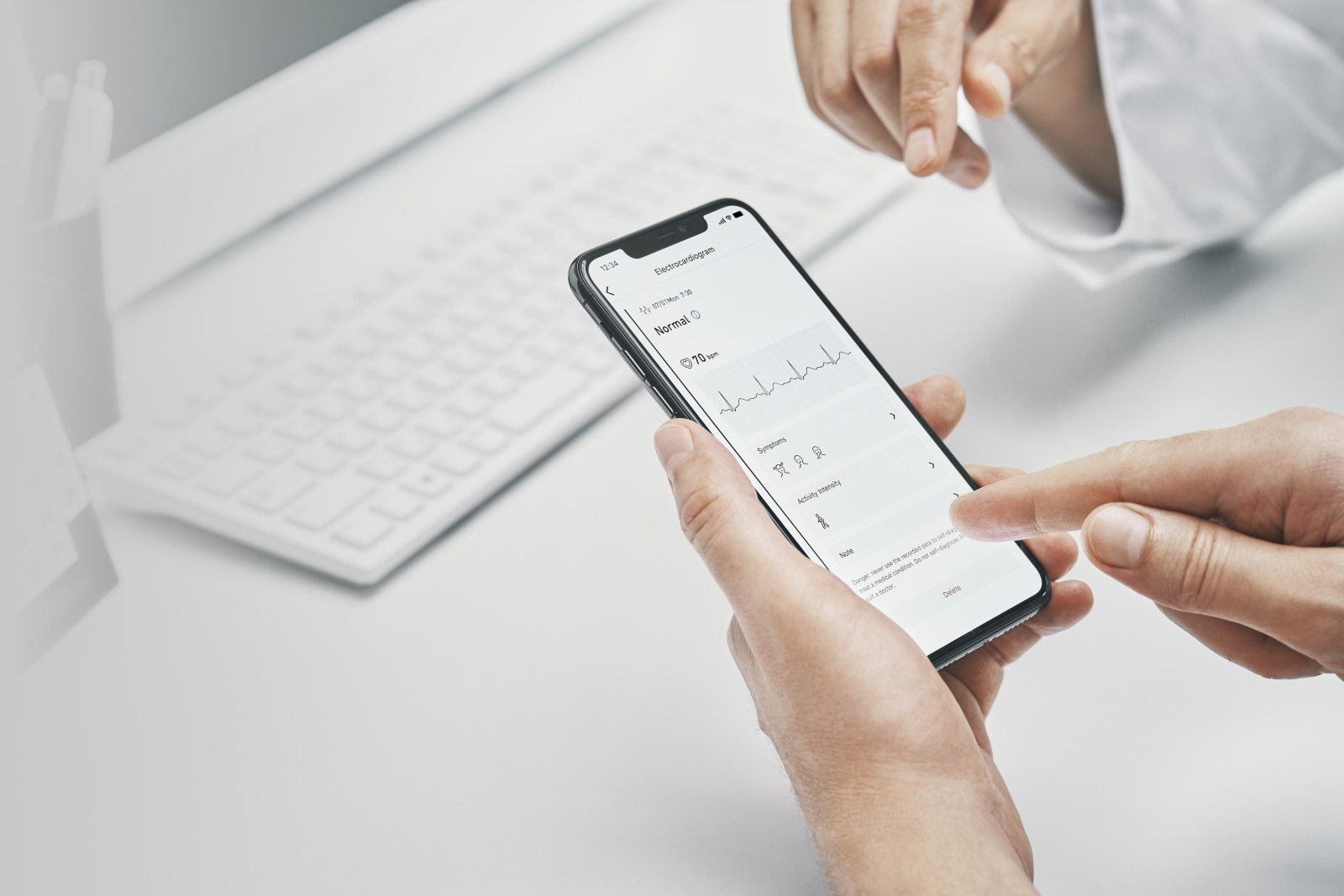

OMRON connect
All your health data, in one place
OMRON connect is a free companion app that makes it easy to record, view and sync personal health data from your OMRON devices, all in one place. You can set individual targets, monitor progress overtime, or even share results with your doctor such as blood pressure, weight, and track your progress over time.
How OMRON Intellisense AFib Screening Technology Works
The OMRON-exclusive Intellisense AFib technology automatically screens for AFib with every blood pressure check.
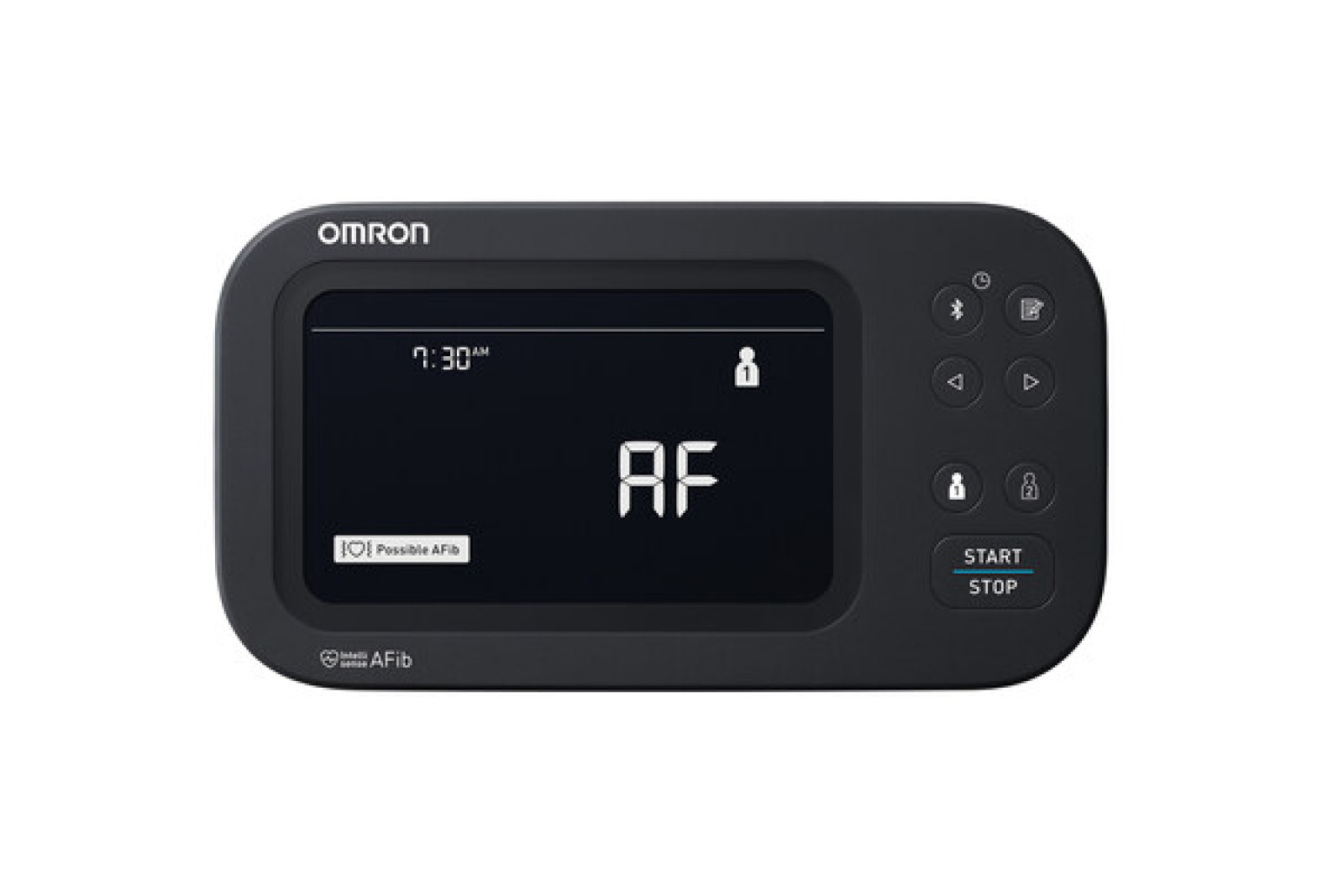



Building on our expertise, we have integrated advanced screening for signs of Atrial Fibrillation with every blood pressure measurement
During a blood pressure check, the sensors in the cuff detect vibrations in the arteries caused by heartbeats.
These vibrations, known as pulse pressure waves, provide a window into the heart's rhythmic patterns - and potentially irregularities.
Employing advanced machine learning techniques, our Intellisense AFib technology identifies patters and signals indicative of Atrial Fibrillation.
This is achieved with a unique algorithm developed through the analysis of thousands of EKG and pulse pressure wave clinical data points, validated in collaboration with medical professionals, ensuring its precision and reliability with a sensitivity of 95% and specificity of 98%.11
The OMRON advantage - Our promise
-
Grounded in extensive user data, our devices set unparalleled benchmarks in accuracy.
Precision in action
-
Timeless trust built to last, you get accurate readings, time after time.
Timeless trust
-
Our devices are designed so they are quick to operate and devoid of any confusing intricacies.
User-friendly
-
OMRON's integrated ecosystem consolidates various health metrics, offering a bird's eye view of patient health.
A comprehensive review
General AFib FAQs
AFib (atrial fibrillation) is an irregular heartbeat condition in which electrical signals are generated from places outside of the sinus nodes of the heart, causing the atria of the heart to quiver1. This disrupts normal heart rhythm and reduces the heart’s ability to pump blood efficiently throughout the body2.
1,2.Mayo Clinic Staff. (2024). An Overview of Atrial Fibrillation. Mayo Clinic. https://www.mayoclinic.org/diseases-conditions/atrial-fibrillation/symptoms-causes/syc-20350624
AFib increases stroke risk fivefold, particularly raising the likelihood of a cardiogenic brain embolism1. This type of stroke accounts for 20% of all strokes and has the highest mortality rate among them2.
1.Singleton et al. (2020). Association of Atrial Fibrillation Without Cardiovascular Comorbidities and stroke Risk: From the REGARDS Study. Journal of the American Heart Association. https://pmc.ncbi.nlm.nih.gov/articles/PMC7429041/#:~:text=Background,has%20not%20been%20well%E2%80%90characterized.
2.Schneck et al. (2021). Cardioembolic Stroke. Medscape. https://emedicine.medscape.com/article/1160370-overview?form=fpf#a1
Risk factors for developing AFib include hypertension, obstructive sleep apnea, and aging1. Hypertension contributes to AFib risk by increasing intra-atrial pressure and causing changes to the structure of atrial muscles in the heart2.
1,2.Mayo Clinic Staff. (2024). An Overview of Atrial Fibrillation. Mayo Clinic. https://www.mayoclinic.org/diseases-conditions/atrial-fibrillation/symptoms-causes/syc-20350624
AFib can cause blood to stagnate in the atria of the heart, leading to the formation of blood clots1. These clots can then travel to the brain and block blood vessels, causing a major stroke known as a cardiogenic brain embolism2.
1,2.Mayo Clinic Staff. (2024). An Overview of Atrial Fibrillation. Mayo Clinic. https://www.mayoclinic.org/diseases-conditions/atrial-fibrillation/symptoms-causes/syc-20350624
Approximately 40% of AFib patients do not experience any symptoms, making early detection challenging1. Some common symptoms include heart palpitations, shortness of breath, dizziness, and fatigue2.
1,2. Streur et al. (2019). Atrial Fibrillation Symptom Perception. Journal for Nurse Practitioners. https://www.npjournal.org/article/S1555-4155(18)30697-4/abstract
Chronic hypertension forces the heart to work harder to pump blood, which leads to a thickening of the left ventricular wall1. This thickening reduces its flexibility and increases its workload, causing the left atrium to enlarge over time2. The structural change disrupts normal electrical activity in the heart, triggering arrhythmias that can ultimately lead to AFib3.
1,2,3. Healy, Connolly. (2003). Atrial Fibrillation: Hypertension as a Causative Agent, Risk Factor for Complications, and Potential Therapeutic Targets. American Journal of Cardiology. https://pubmed.ncbi.nlm.nih.gov/12781903/#:~:text=Hypertension%20is%20associated%20with%20left,the%20risk%20of%20thromboembolic%20complications.
An irregular heartbeat notification indicates that the heart rhythm is 25% less or 25% more than the average rhythm detected while your monitor is measuring blood pressure, which may affect the accuracy of the reading. In contrast, an AFib notification detects specific wave patterns unique to AFib, requiring precise analysis of pulse wave intervals and other distinct characteristics of the wave form in a state of AFib.
Take charge of your heart health
AFib is on the rise in the U.S., affecting millions – and many don’t even know they have it. Hypertension significantly increases the risk of AFib, which is why routine home blood pressure monitoring is essential. Transform your home blood pressure check into a potential defense against stroke with a clinically accurate, easy-to-use, reliable blood pressure monitor with built-in AFib screening technology - from OMRON.



Lei N, et al. Hybrid Decision Support to Monitor Atrial Fibrillation for Stroke Prevention. Int J Environ Res Public Health. 2021 Jan 19;18(2):813.
Alsheri AM. (2019). Stroke in atrial fibrillation: Review of risk stratification and preventive therapy. Journal of Family & Community Medicine. https://pmc.ncbi.nlm.nih.gov/articles/PMC6515763/
Mayo Clinic Staff. (2024). An Overview of Atrial Fibrillation. Mayo Clinic. https://www.mayoclinic.org/diseases-conditions/atrial-fibrillation/symptoms-causes/syc-20350624
NHS. Home. Health A to Z. Atrial fibrillation. Available at: https://www.nhs.uk/conditions/atrial-fibrillation/. Accessed May 2023.
Johns Hopkins Staff. What is AFib. Johns Hopkins Medicine. https://www.hopkinsmedicine.org/health/conditions-and-diseases/atrial-fibrillation Accessed March 2025.
European Society of Cardiology. The ESC. ESC Press Office. Press releases. Available at: https://www.escardio.org/The-ESC/Press-Office/Press-releases/Atrial-fibrillation-set-to-affect-more-than-14-million-over-65s-in-the-EU-by-2060#:~:text=Atrial%20fibrillation%20is%20the%20most,are%20caused%20by%20atrial%20fibrillation. Accessed May 2023.
Lloyd-Jones DM et al. Lifetime risk for development of atrial fibrillation: the Framingham Heart Study, Circulation. 2004 Aug 31;110(9):1042-6.
NHS. Home. Health A to Z. Atrial fibrillation. Available at: https://www.nhs.uk/conditions/atrial-fibrillation/complications/. Accessed May 2023.
Verdecchia, P., et al. (2018). Hypertension and Atrial Fibrillation: Doubts and Certainties From Basic and Clinical Studies. Circulation research, [online] 122(2), pp.352–368. doi:https://doi.org/10.1161/CIRCRESAHA.117.311402.
WHO Staff. Cardiovascular Diseases. World Health Organization. https://www.who.int/health-topics/cardiovascular-diseases#tab=tab_1. Accessed March 2025.
Janik, et al. (2024). Novel BPM with Machine Learning for AF Detection. Heart Rhythm Journal. https://www.heartrhythmjournal.com/action/showPdf?pii=S1547-5271%2824%2902520-7




